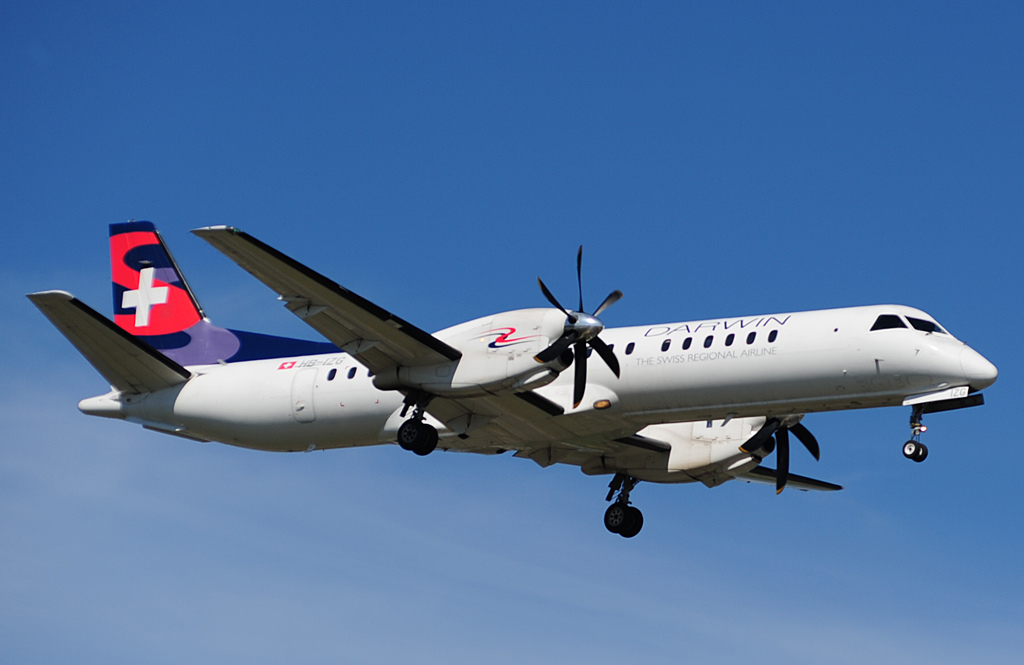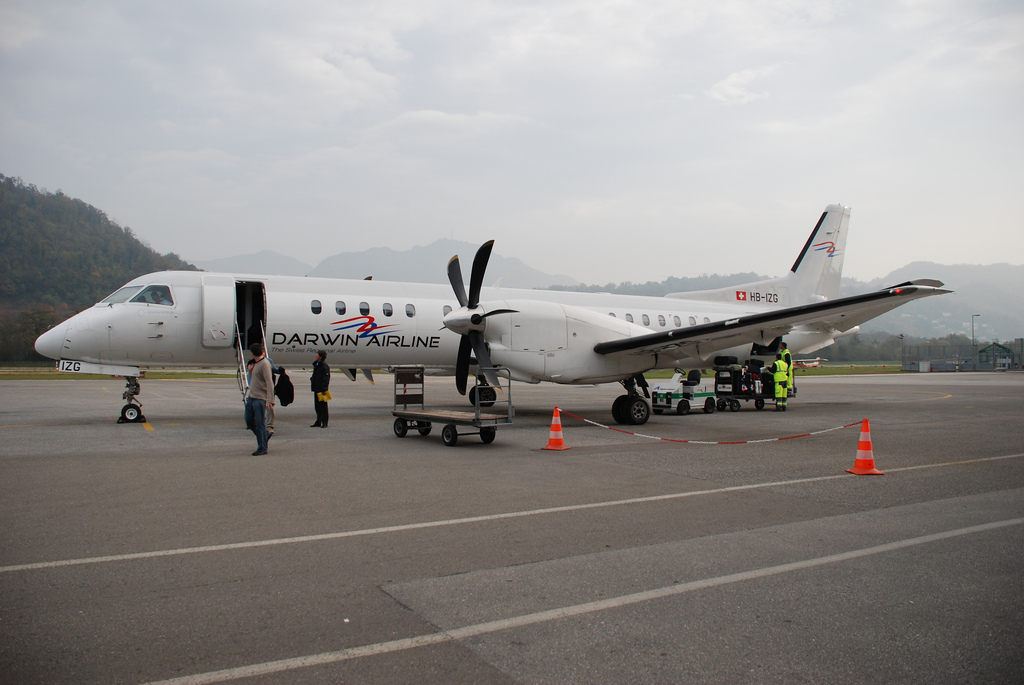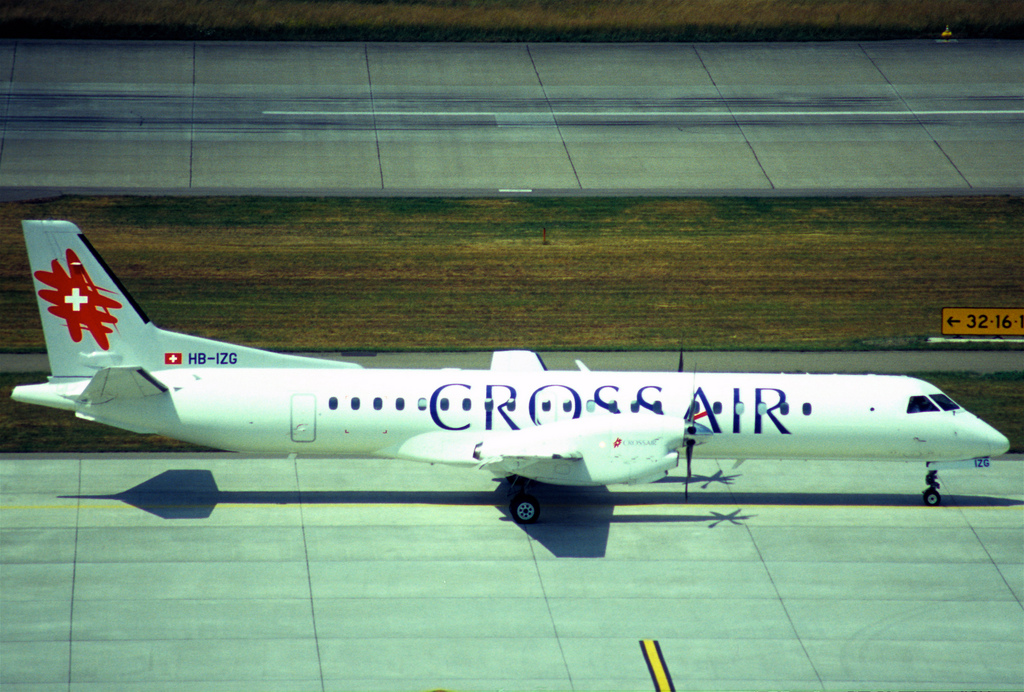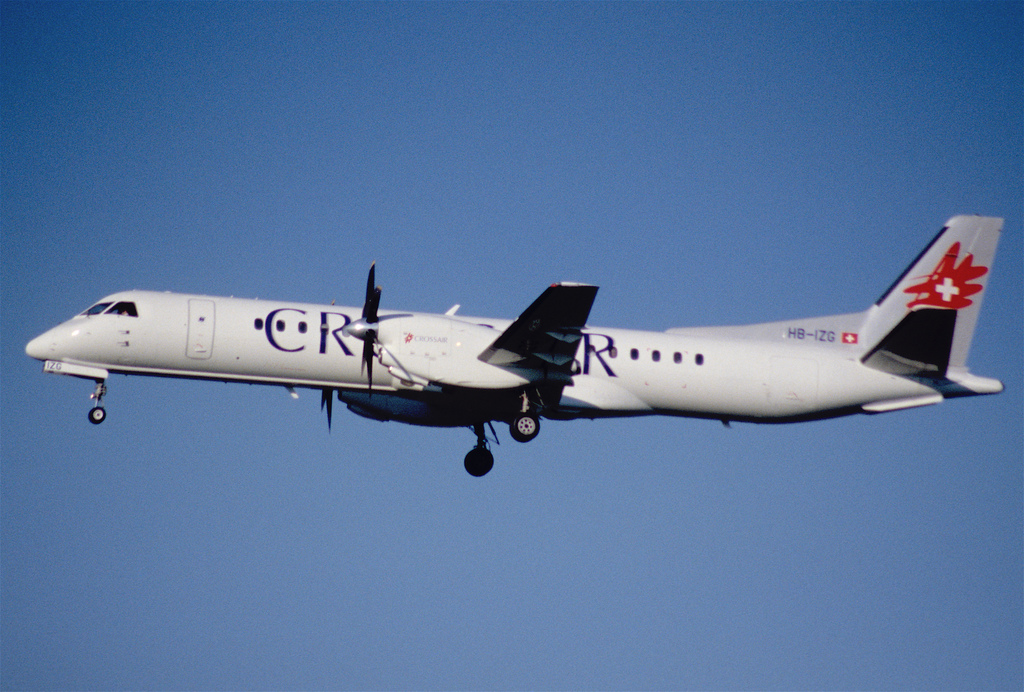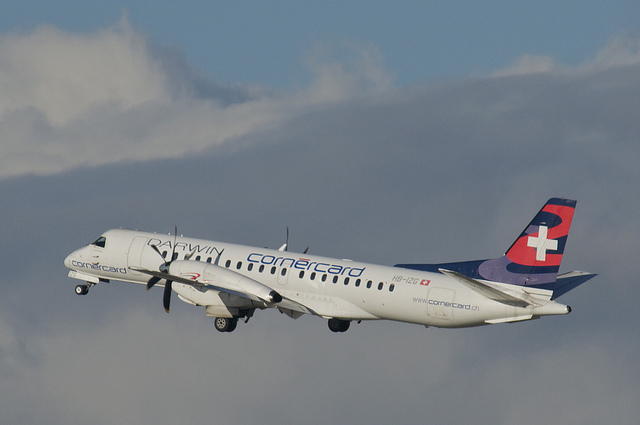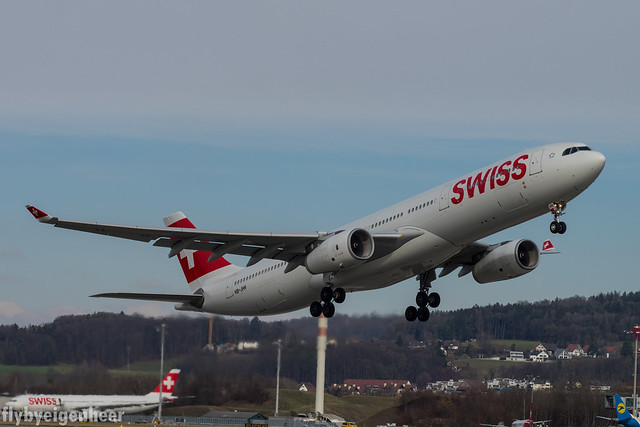Darwin SB20 at Zurich on Aug 22nd 2012, close encounter with touch and go on crossing runway
Last Update: September 24, 2014 / 17:17:47 GMT/Zulu time
Incident Facts
The serious incident is attributable to a near collision because the air traffic controller gave a take-off clearance on runway 28 to a commercial aircraft while a light aircraft was on its approach to runway 16.
The incorrect assessment of the situation by the air traffic controller was established as a direct causal factor for the serious incident.
The following factors were identified as systemic factors contributing to the serious incident:
- Risk assessment by air traffic control was inadequate. A complex training flight was taking place at a time when the volume of traffic was increasing and at medium complexity.
- Because visual approaches were rarely carried out on runway 16, there were only few values derived from experience on which one could have relied when carrying out ones planning.
- The TCAS fitted in the commercial aircraft did not provide any information to the crew on the ground about other aircraft, and this restricted their situational awareness.
The following factors were identified as neither causal nor contributing, but were in the context of the investigation recognised as risk factors:
- Air traffic control instructed the light aircraft which was in landing configuration and close to the ground to perform a tight 360° turn to resolve the conflict.
- Misinterpreted motivation to provide service on the part of air traffic control.
The Sportcruiser was flown by a pilot and a flight instructor. The aircraft had already performed touch and go landings on runway 28, runway 34 and runway 10 and advised they'd now wanted to perform a touch and go on runway 16 to the tower controller, who had just replaced his collegue due to a shift changeover. Tower approved the touch and go and instructed the aircraft to proceed to waypoint W2, then cleared another departure from runway 28 for takeoff. After verifying with the Sportcruiser crew, that they had that departing traffic in sight, he cleared the Sportcruiser to join the right hand downwind runway 16 and warned of wake turbulence.
In the meantime HB-IZG reported ready for departure at the holding point runway 28 and was cleared to taxi into position and wait.
Immediately afterwards tower cleared the Sportcruiser: "...,base turn, then not later than the threshold one six, in order to stay clear of approach track one four."
Two aircraft were cleared to cross runway 28, some exchange in local dialect was radioed.
In the meantime the Sportcruiser turned base and reported: "right-hand base, runway one six". At this time the crew of HB-IZG became aware of a light aircraft in the vicinity of the aerodrome but did not know exactly where the aircraft was. The SUST reported the aircraft was 70 seconds from estimated touch down on runway 16 at this point. Tower instructed "you are number one, continue approach", 4 seconds later cleared HB-IZG for takeoff from runway 28.
The SUST summarized: "The flight instructor subsequently stated that he had perceived something like '28' on the radio and had then instructed the pilot not to descend any further. Shortly afterwards he saw that DWT 124 had commenced its take-off procedure on runway 28. At 14:15:04 UTC the ADC controller instructed the crew of the Sportcruiser to join the left-hand downwind of runway 28 after the touch-and-go. The trainee immediately confirmed this instruction. The instructor then recognised the impending conflict and prepared himself mentally to avoid the Saab 2000 which was taking off by turning left over the control tower."
The SUST continued: "After the tower controller had cleared an aircraft to land on runway 14, according to his own information he was surprised at the early base turn performed by the Sportcruiser and recognised the impending conflict with DWT 124, which was taking off. As he subsequently indicated, aborting the take-off was no longer an option for the Saab 2000, since he estimated that its speed was already quite high. At 14:15:30 UTC he instructed the crew of the Sportcruiser to initiate a 360° turn to the right. This was immediately confirmed by the flight instructor on-board the Sportcruiser. Five seconds later the instruction followed: 'tight turn, traffic departing out of runway two eight.' The crew of the Sportcruiser, at a height of approximately 250 ft above ground level (AGL), initiated a tight, slightly ascending turn to the right, which brought them back onto the downwind of runway 16."
The Sportcruiser, flying a tight 360 with flaps extended, lost sight of the Saab in the turn, the Saab became airborne and TCAS activated with a traffic advisory "Traffic! Traffic!" showing the Sportcruiser to the right of the Saab's intended flight path, both crew were able to establish visual contact. The Saab increased their rate of climb, not reducing their speed below safe speed. The lateral distance between the aircraft reduced to 205 meters when the Sportcruiser was in the tight right turn just north of runway 28 at 1835 feet MSL and the Saab was climbing out just west of the intersection of runway 16/28 at 1910 feet MSL.
The SUST reported that the TCAS on board of the Saab did not display the traffic around the aircraft while on the ground and did not issue any alerts. As soon as the aircraft became airborne the visual display of the traffic around the aircraft became available, resolution advisories were inhibited however below 1000 feet AGL to avoid any dangerous avoidance maneouvers close to ground.
The SUST analysed: "Since there was constant arrival traffic on runway 14, the Sportcruiser was also instructed to turn onto the base leg not later than the threshold of runway 16. In the process, the tower controller specified only a northern limit to the flight path. However, the lack of a southern limit to the flight path left it to the crew of the Sportcruiser to define the base leg and the final approach (final) for the touch-and-go landing on runway 16 at their sole discretion. To implement the instruction from the tower controller, the flight instructor instructed the pilot of the Sportcruiser to head towards the runway 16 aiming point in the base leg. As a result, the flight path of the Sportcruiser was significantly shortened."
After the crew of the Sportcruiser reported base tower instructed the flight to continue the approach and cleared the Saab for takeoff. The SUST analysed: "This sequence of events suggests that the tower controller judged the exact position of the Sportcruiser incorrectly. This is reflected, for example, by the fact that he did not instruct the crew of DWT 124 to speed up their take-off (e.g. expedite departure); nor did he provide traffic information in relation to the Sportcruiser. Even later, when the air traffic controller was giving an instruction to the crew of DWT 124 then Sportcruiser, the situation did not appear to him to be critical."
The SUST analysed with respect to the crew of the Saab, that the unnecessary casual chatter on tower frequency distracted the crew in their departure preparations and contributed that other call signs were masked out by the crew. The crew thus was aware of the presence of a light aircraft near the aerodrome but could not estimate its position. When the crew received takeoff clearance the Sportcruiser was in a position which made it difficult, if not impossible, to visually detect the Sportcruiser from the threshold of runway 28. In addition, the TCAS display did not show any traffic. The SUST continued: "Since the crew on the ground had no information about aircraft flying within a certain range, their situational awareness was unnecessarily restricted, which was a factor in the origin of the serious incident. It is therefore not surprising that the crew of DWT 124 were surprised shortly after take-off by the traffic advisory (TA) 'traffic, traffic' generated by the on-board TCAS. This prompted the commander to look to the right in the direction of the displayed aircraft. When he could then establish visual contact with the Sportcruiser and recognize the danger, he increased the rate of climb to avoid this aircraft vertically. In view of the fact that according to the configuration of the TCAS at this low height above ground, no resolution advisories (RA) are generated, this action was appropriate and ensured that the hazard did not increase. The airspeed did not fall below the minimum airspeed for a safe initial climb (minimum take-off safety speed - V2), which indicates that the manoeuvre was carried out cautiously."
With respect to the crew of the Sportcruiser the SUST analysed: "After the flight instructor had heard an instruction for an aircraft on runway 28, he instructed the pilot not to descend any further. A short time later, the flight instructor could see that a Saab 2000 had initiated its take-off procedure on runway 28. When the instructor had become aware of the impending conflict, he prepared himself mentally to avoid the Saab 2000, which was taking off, by turning left over the control tower. The subsequent instruction from the tower controller to the crew of the Sportcruiser to initiate a tight 360° turn the right was implemented without delay. Although the flight instructor on-board the Sportcruiser recognized the impending conflict on the basis of his perceptions and acted foresightedly with his instruction to the trainee pilot, at this moment he did not, however, have an overview of the flow of traffic on the airport. He therefore obeyed the avoidance instruction of the controller and did not adopt any flight path which deviated from this. Owing to time constraints, there was no way to agree a different approach with the tower controller or to inform him of such. Performing a tight turn at a high bank angle with flaps extended near the ground is challenging and requires a high degree of concentration. As a result of the instructor's good situational awareness, the crew of the Sportcruiser were not unprepared when confronted with this near-collision. This is also demonstrated by the fact that the flight instructor confirmed the instruction to make a tight turn without delay, especially as the instruction for the flight path after the touch-and-go on runway 16 had been given just 30 seconds before. The fact that there were two pilots on board the Sportcruiser undoubtedly contributed to ensuring that this turn close to the ground, which entailed risk, did not lead to an uncontrolled flying condition."
The SUST complained that neither the crew of the Sportcruiser nor the tower controller submitted a report. The crew of the Sportcruiser argued they were not in a position to assess the risk adequately and therefore did not file a report, the tower assessed the situation as non-critical and also did not submit a report. Only the crew of the Saab submitted a report and thus initiated the investigation into the occurrence. The SUST reminded: "Just because other parties are involved in an incident does not release one from the obligation to submit a report."
Aircraft Registration Data
This article is published under license from Avherald.com. © of text by Avherald.com.
Article source
You can read 2 more free articles without a subscription.
Subscribe now and continue reading without any limits!
Read unlimited articles and receive our daily update briefing. Gain better insights into what is happening in commercial aviation safety.
Send tip
Support AeroInside by sending a small tip amount.
Related articles
Darwin SB20 at Paris on Jan 28th 2014, nose wheels separated on landing
A Darwin Airlines Saab 2000 on behalf of Etihad Regional, registration HB-IZG performing flight F7-250 from Leipzig (Germany) to Paris Charles de…
Newest articles
Swiss A333 at Newark on Nov 16th 2025, lightning strike
A Swiss International Airlines Airbus A330-300, registration HB-JHN performing flight LX-18 from Zurich (Switzerland) to Newark,NJ (USA) with 120…
ASL UK AT72 at East Midlands on Nov 14th 2025, tyre and runway damage on landing
An ASL Airlines UK Avions de Transport Regional ATR-72-212A freighter, registration G-OASB performing flight ABV-108 from Guernsey,CI to East…
Subscribe today
Are you researching aviation incidents? Get access to AeroInside Insights, unlimited read access and receive the daily newsletter.
Pick your plan and subscribePartner

ELITE Simulation Solutions is a leading global provider of Flight Simulation Training Devices, IFR training software as well as flight controls and related services. Find out more.
SafetyScan Pro provides streamlined access to thousands of aviation accident reports. Tailored for your safety management efforts. Book your demo today
AeroInside Blog
Popular aircraft
Airbus A320Boeing 737-800
Boeing 737-800 MAX
Popular airlines
American AirlinesUnited
Delta
Air Canada
Lufthansa
British Airways

